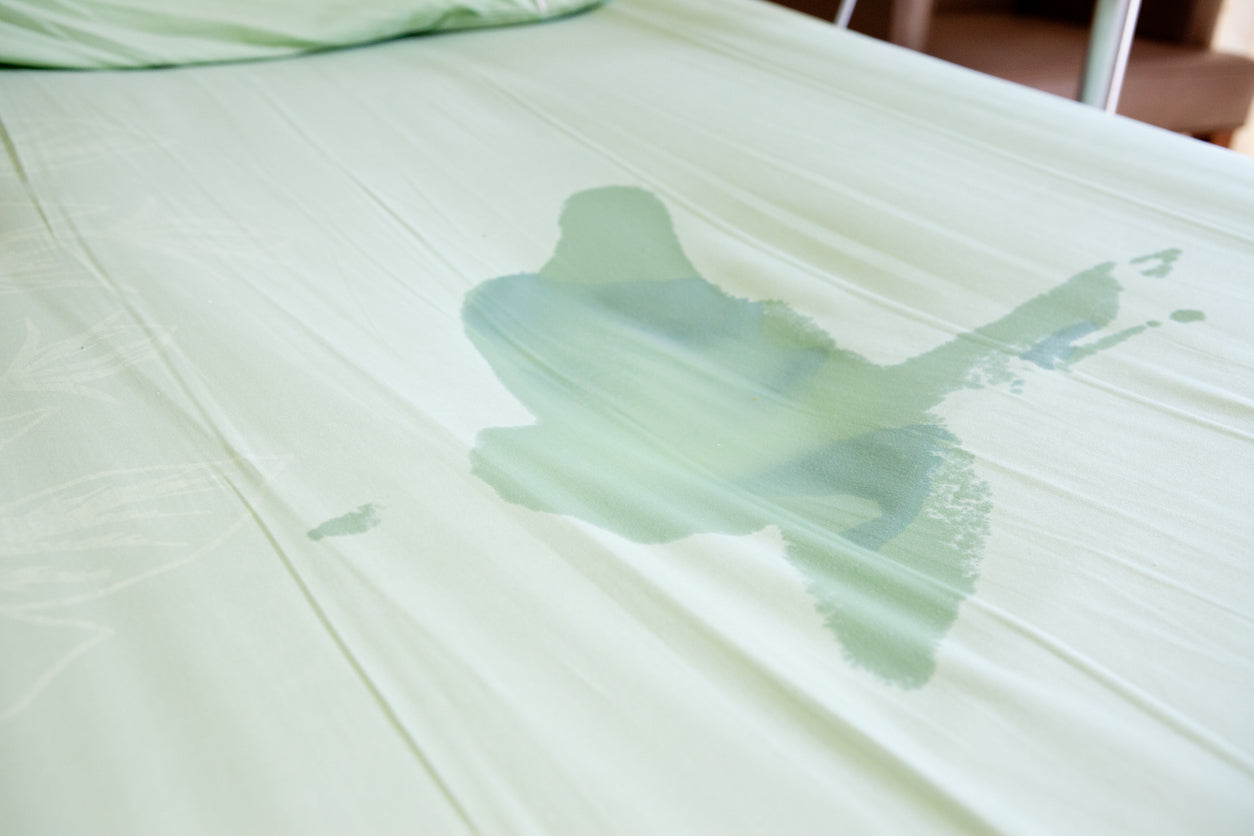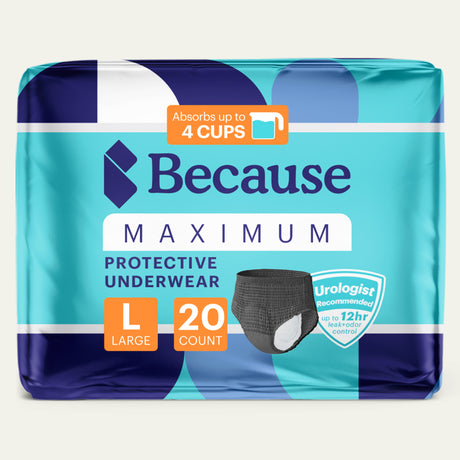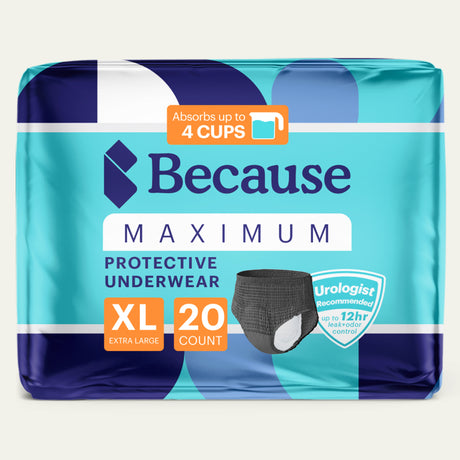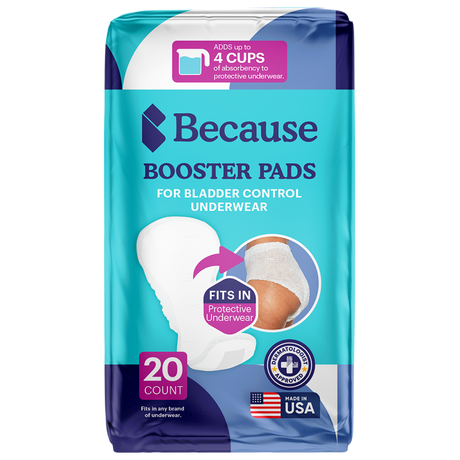Waking up to wet sheets night after night can be disheartening for children and loved ones and exhausting for parents and caregivers. If you're searching for a solution that goes beyond simply managing the mess, a bed wetting alarm might be the answer. These devices offer a proactive approach to nighttime wetting, helping your loved one develop bladder control and achieve lasting dryness. This comprehensive guide explores the ins and outs of bed wetting alarms, providing you with the knowledge and resources you need to choose the right alarm, use it effectively, and support your loved one through the process. Because understands the challenges of bedwetting and is here to help you navigate this journey with confidence and compassion.
Key Takeaways
- Bed wetting alarms offer a practical solution: These devices gently interrupt sleep when moisture is detected. This helps children learn to recognize a full bladder and wake up to use the bathroom, wakes adults when they experience nighttime leaks, and informs caregivers when their loved one has wet the bed. Consistent use is key for improving nighttime dryness.
- Different alarm types cater to individual needs: From wearable and wireless to bedside options, bed wetting alarms offer various features to suit different scenarios. Consider your loved one's age, sleep patterns, and comfort when selecting an alarm.
- A supportive approach empowers you and your loved one: Bed wetting can be emotionally challenging. Open communication, positive reinforcement, and patience create a supportive environment that helps build confidence and manage bedwetting effectively.
What Are Bed Wetting Alarms?
A bedwetting alarm is an alarm device designed to help children and adults overcome nighttime wetting. It can act as a training tool or as a notification system, not a diaper substitute, and gently interrupts sleep when moisture is detected. This helps the user recognize the sensation of a full bladder and learn to wake up and use the bathroom or wake up in time to stop a heavy leak. Bedwetting alarms empower their users to take control of their nighttime routine and build confidence in managing their bladders.
How do bedwetting alarm systems work?
Bedwetting alarms typically have two main components: a moisture sensor and an alarm. The sensor, often placed in the user's underwear or on the bed, detects even small amounts of urine. When wetness is detected, the alarm sounds, waking the user. This process can help condition a child to associate the feeling of a full bladder with waking up. With the goal that over time, the child will wake up before the alarm sounds, eventually eliminating the need for the device altogether. For adults, the alarm can assist in waking them up before a full leak occurs helping to protect furniture and bedding. The alarm itself can vary; some are wearable, while others are wireless or bedside units.
Types of Bedwetting Alarms
Choosing the right bedwetting alarm can feel overwhelming with so many options available. Understanding the different types can help you find the best fit for you or your loved one. Let's explore the three main types: wearable alarms, wireless alarms, and bedside alarms.
Wearable Alarms
Wearable alarms are small devices a user wears, typically clipped to their pajamas or underwear however some come as an armband. These alarms have a moisture sensor that triggers a sound or vibration when urine is detected. The sensor is connected to the alarm unit by a wire. While wired alarms can be effective, the wire can sometimes be uncomfortable or restrict movement during sleep. Some users might also find the wire bothersome and try to disconnect the alarm during the night.
Wireless Alarms
Wireless alarms offer a more convenient approach. Like wearable alarms, they use a moisture sensor to detect urine. These bed wetting alarms are similar to bed mats. However, instead of a wire, these alarms communicate wirelessly with a receiver unit. This receiver can be a separate device or even an app on your smartphone. The wireless design allows for greater freedom of movement, which can be especially helpful for restless sleepers. Many wireless alarms offer vibration alerts in addition to sound, providing a discreet way to wake the user.
Bedside Alarms
Bedside alarms work differently than wearable or wireless options. With a bedside alarm, the moisture sensor is usually placed in the underwear, and the alarm unit sits on the bedside table. When the sensor detects wetness, it triggers the alarm unit to sound. One potential drawback is that the user might not wake up immediately, which could lead to a larger wet spot. However, they can be a good option for users who find wearable alarms uncomfortable.

How Effective Are Bedwetting Alarms?
Deciding to try a bedwetting alarm is a big step. It’s natural to wonder, “Do these things actually work?” The good news is that research shows bedwetting alarms can be very effective for managing nighttime incontinence in children. There is less research on its effectiveness for adults.
Success rates and statistics
Studies show promising results for bed wetting alarms. One study found that over 75% of children using alarms achieved 14 consecutive dry nights, compared to only 2% of children who didn’t. Other research suggests a success rate above 50% with enuresis alarm treatment. These numbers suggest that bed wetting alarms can significantly improve nighttime dryness for many children.
Factors influencing effectiveness
While these statistics are encouraging, it’s important to remember that every user is different. Several factors can influence how well a bed wetting alarm works. Users with other conditions, such as sleep disorders or PTSD, might need additional support or more time to see improvement. Also, bedwetting alarms tend to be most effective for users who already have some dry nights, even if they’re infrequent. This is because the alarm helps them learn to recognize and respond to their body’s signals or wake up in time to stop unexpected leaks.
Realistic expectations and timeframes for training children
It’s important to set realistic expectations about how long it takes to see results with a bed wetting alarm. While some children respond quickly, for most families it takes around three months of consistent use. Experts recommend using the alarm every night until your child has stayed dry for three consecutive weeks. At that point, you can discontinue using the alarm. If bedwetting returns, simply restart the alarm and continue the routine. Consistency and patience are key to success with bed wetting alarms.
Choose the Right Bed Wetting Alarm
Picking the right bed wetting alarm can feel overwhelming with so many options available. This section breaks down key features, how to match an alarm to your specific needs, and why prioritizing comfort and ease of use is crucial for success.
Key features to consider
Bed wetting alarms vary in style, functionality, and price. Understanding the different types available is the first step. Wired alarms have a sensor connected to the alarm unit by a wire. Wireless alarms use a sensor that communicates wirelessly with the alarm unit, often vibrating instead of making a sound. Bedside alarms, another option, detect moisture on the sheets. Prices typically range from $50 to over $150. Knowing your budget and desired features will help narrow your search.
Match alarms to your needs
Consider your loved one’s age, sleep habits, and any special needs. A younger child might respond better to a wearable alarm with a gentle vibration, while an older child or adult might prefer a wireless alarm with more discreet features. Think about how deeply you or your loved one sleeps. If they're a deep sleeper, you might need an alarm with a louder sound or more intense vibration.
Comfort and ease of use
A comfortable and easy-to-use alarm is essential for consistent use. Most alarms have two main components: a moisture sensor and an alarm unit. The sensor is usually placed in the underwear, and the alarm unit is clipped to their pajamas. When the sensor detects wetness, the alarm sounds. Look for alarms with sensors that are comfortable against the skin and alarm units that are easy for you to manage. Remember, consistent use and parental involvement where children are involved are key to success with bed wetting alarms. Choosing one that is both comfortable and user-friendly is important.

Use a Bed Wetting Alarm Effectively
Successfully using a bedwetting alarm involves a combination of proper setup, consistent routines, and a supportive approach. Here’s how to make the most of this helpful tool:
Set up the alarm
A bedwetting alarm typically has two main components: a moisture sensor and an alarm unit. The moisture sensor is placed in the underwear, while the alarm unit (which can be a buzzer, voice, or vibration) is clipped onto their pajamas. When the sensor detects even a small amount of urine, the alarm is triggered. Make sure you follow the manufacturer’s instructions for proper placement and attachment.
Establish a nightly routine
Consistency is key when using a bedwetting alarm. Try to have your loved one go to bed around the same time each night and attach the sensor directly to their underwear. If you are trying to help a child stop bedwetting, it’s important not to use pull-ups or training pants with the alarm, as these can absorb moisture and prevent the alarm from sounding promptly. A predictable bedtime routine helps reinforce the connection between the alarm and the need to wake up. If you are caring for an adult or are looking to use a bedwetting alarm for yourself, you may need to do some trial and error on where to place the sensor while wearing adult diapers so as to limit the amount of leakage before the sensor picks up the moisture.
Respond to alarms
When the alarm sounds, it’s crucial to ensure your child wakes up. If they don’t wake up on their own, gently wake them and help them get to the toilet. Don't turn off the alarm until they’ve used the toilet. This reinforces the association between the sensation of needing to urinate and waking up. Over time, this helps them learn to recognize the sensation before the alarm goes off.
Tips for optimal results
Using a bedwetting alarm to help your child stop bedwetting effectively requires patience and persistence. It can take several weeks, or even months, to see consistent dry nights. Keep a calendar or chart to track wet and dry nights, which can help you and your child monitor progress and stay motivated. Clean the sensor daily according to the package instructions to ensure it functions correctly and prevent damage. Remember, consistency is key to success with bedwetting alarms.

Other Nighttime Incontinence Tools
While bedwetting alarms are a widely recommended solution for managing nighttime incontinence, they may not work for everyone or may take time to be effective. In these cases, additional tools can provide valuable support—either as a supplement to alarms or as an alternative when alarms alone are insufficient.
Incontinence Underwear & Briefs
Designed to look and feel like regular underwear, these garments offer discreet absorbency and are ideal for moderate leaks. They can be used alongside bedwetting alarms to manage accidents during the training process or as a standalone solution for ongoing protection.
Incontinence Pads & Guards
These absorbent inserts can be placed inside regular underwear or incontinence briefs to enhance absorbency without the need for a full garment change. They are especially useful for individuals who experience light to moderate nighttime leaks.
Incontinence Underpads
Also known as bed protectors or chux, these disposable or reusable pads are placed on top of the mattress or bedding to protect against leaks. Underpads can be used with alarms or other absorbent products to simplify clean-up and protect sleep surfaces.
Booster Pads
These thin, flow-through pads are designed to be used inside incontinence underwear or briefs to increase overall absorbency. Once the booster reaches capacity, liquid flows through to the base garment, making them ideal for users who need extended protection throughout the night.
These products offer flexible, layered protection strategies that can help maintain dignity, comfort, and hygiene during nighttime incontinence management.
Support Your Loved One
It's important to remember that bedwetting is a common childhood and adult experience. While bedwetting alarms can be a helpful tool, your loved one’s emotional well-being is just as important as their physical comfort.
Understand the Psychological Impact
Bedwetting can be tough on a person’s self-esteem. They might feel embarrassed, ashamed, or frustrated. Research shows bedwetting can significantly impact a child's confidence and emotional well-being. Recognizing these feelings is the first step toward helping your child cope. Studies have also shown that incontinence, including nighttime incontinence, has a negative impact on quality of life in adults. Try to imagine how isolating it might feel, and approach the situation with empathy. Remember, it's not their fault, and they're likely already feeling bad about it.
Build Confidence
One of the most crucial things you can do is create a supportive and understanding environment. Avoid punishment or blame, as this can worsen the situation and have negative long-term effects. Instead, focus on positive reinforcement and celebrate small victories, like a dry night or even just their willingness to try the alarm. Open communication is key. Let your loved one know they can talk to you about their feelings without judgment. Sometimes, just knowing they're not alone can make a big difference. Consider involving them in choosing and using the bedwetting alarm, empowering them to take ownership of their journey.
Encourage Consistency and Patience
Using a bedwetting alarm effectively requires consistency and patience. Establishing a regular routine and sticking with it is important, even if you don't see immediate results. Some children respond quickly to alarms, while others may take weeks or even months to see improvement. Remind your child that setbacks are normal and that accidents happen. Patience and persistence are key. Celebrate their progress, no matter how small, and continue to offer encouragement and support.
Overcome Common Challenges with Children
Using a bedwetting alarm can be a journey with its own set of hurdles. Knowing how to handle these challenges can make all the difference in your child's progress and your own peace of mind. Here’s how to tackle some common issues:
Deal with false alarms
Occasionally, bedwetting alarms might go off even when your child hasn’t wet the bed. These false alarms can be frustrating, especially in the beginning. Try to remain patient and supportive. False alarms often happen as your child adjusts to the alarm and learns to recognize the sensation of a full bladder. Check the alarm’s placement and sensitivity to minimize these occurrences. Consider factors like ensuring the sensor is properly positioned and not overly sensitive to movement or sweat. If false alarms persist, consider switching to a different type of alarm. Remember, these hiccups are a normal part of the process.
Address sleep-through issues
Some children, especially deep sleepers, might sleep through the alarm. If this happens, gently wake your child when the alarm sounds. This helps reinforce the connection between the alarm and the need to get up and use the bathroom. Over time, the goal is for your child to wake up to the alarm independently. If your child continues to sleep through the alarm, you might consider involving another family member to help with waking them, or adjusting the alarm system’s volume or tone. Experiment with different alarm sounds and volumes to find what works best for your child.
Manage potential relapses
Even when the bedwetting alarm seems to be working, occasional relapses can occur. Don’t get discouraged! This is normal. If bedwetting returns, simply restart the alarm and resume the routine. Consistency is key. If relapses become frequent or persistent, it’s a good idea to consult your child’s pediatrician. They can help identify any underlying issues or suggest alternative strategies. Remember, setbacks are a part of learning, and with patience and support, your child can regain their progress.
When to Use a Bedwetting Alarm
Bedwetting alarms can be helpful, but they aren't always the right solution. Understanding when to introduce an alarm is key to its effectiveness.
Age Considerations
While occasional accidents are normal, persistent bedwetting can be frustrating. For children, most experts recommend considering a bedwetting alarm for children over seven. Before this age, children are still developing bladder control, and an alarm might not be appropriate. Your pediatrician can offer personalized advice based on your child's specific needs.
Frequency of Bedwetting
- Children: How often your child wets the bed is another factor. If accidents are occasional, lifestyle changes or simply waiting might be best. Cincinnati Children's Hospital points out that bedwetting is relatively common, affecting 5–10% of children between five and seven years old. If bedwetting occurs multiple times a week, an alarm could be a useful tool to help your child develop nighttime bladder control.
- Adults: If nighttime leaks are occasional, there may be lifestyle changes you can make to mitigate bedwetting all together. If lifestyle changes are not enough, a bedwetting alarm can be helpful in protecting your furniture and bedding from heavy leaks.
Discuss Alarms with Your Child
Introducing a bedwetting alarm should be a collaborative process. Talk openly with your child about how the alarm works and why you think it might help. Frame the alarm as a helpful tool, not a punishment, and emphasize that you're working together to achieve dryness. This collaborative approach can empower your child and increase the likelihood of success.

When to See a Doctor
While bedwetting alarms can be effective for many children and adults, some situations warrant professional medical advice. Knowing when to consult a doctor ensures your loved one receives the appropriate care and addresses any underlying medical conditions that may be contributing to the bedwetting.
Signs it's time to seek medical advice
It's generally recommended to consult your pediatrician if bedwetting continues despite consistent use of a bedwetting alarm for several weeks. Also, consider scheduling a doctor's visit if bedwetting restarts after a dry period, or if it's accompanied by other symptoms like snoring, restless sleep, or constipation. Talking to your pediatrician before purchasing a bedwetting alarm can also be helpful, especially to rule out any underlying medical issues and ensure the alarm is the right approach for your child.
If you or your adult loved one is experiencing bedwetting as a new symptom, it is always a good idea to discuss this with your doctor. Your nighttime leaks could be indicative of a larger health issue that needs treatment. Speaking to your doctor can rule out any other underlying health issues that could be playing a role.
What to expect during a consultation
During the consultation, the doctor will likely gather information about your loved one's medical history, family history of bedwetting or incontinence, and daily routines, including fluid intake and bathroom habits. A physical exam may be conducted to rule out any underlying medical conditions. Based on this evaluation, the doctor may recommend a personalized treatment plan. This plan could include behavioral strategies, bedwetting alarms, or medication, depending on the severity and underlying causes of the bedwetting.
Common Misconceptions About Bedwetting Alarms
It's understandable to have questions and maybe even a few reservations about bedwetting alarms. Let's clear up some common misconceptions and address concerns you might have.
Address parental concerns
One of the biggest worries parents have is that bedwetting alarms simply won't work. You might think your child will just grow out of it, or that it's a deep sleep issue that an alarm can't fix. While some children do eventually stop bedwetting on their own, bedwetting alarms can be a very effective tool to help them gain nighttime bladder control. These alarms sense moisture and alert your child (and you) as soon as wetting begins. This immediate feedback helps train their bodies to recognize the sensation of a full bladder and wake up.
Clarify expectations and outcomes
Another misconception is that bedwetting is rare. It's actually more common than you might think. Bedwetting affects 5-10% of children between ages 5 and 7. Nocturia, the need to ruinate multiple times a night in adults, affects more than 50% of adults over 50. Knowing this can help you and your child feel less alone. It's also important to have realistic expectations about how long it takes for a bedwetting alarm to be effective. Consistency and patience are key, both from you and your child. This is a process, and setbacks are normal.
Other Resources for Nighttime Leaks
In addition to bedwetting alarms, various practical tools can help manage nighttime leaks effectively and minimize the impact on sleep quality and bedding. Incontinence underpads, also known as bed pads, provide an extra layer of protection by absorbing moisture and safeguarding mattresses from damage. Absorbent underwear and bladder leak pads and guards are discreet and offer a comfortable solution for individuals seeking added security throughout the night. For adults experiencing more severe incontinence, catheters may be an option to prevent leaks altogether, offering both convenience and peace of mind. These resources, used alongside behavioral strategies or medical interventions, can significantly reduce the stress and disruption caused by urine or bowel leaks, allowing individuals to rest with confidence.
Frequently Asked Questions about Bedwetting Alarms
Q: My child is embarrassed about bedwetting. Will an alarm make them feel worse?
It's completely understandable that your child feels embarrassed. Bedwetting is common, but it can still be a sensitive topic. Using a bedwetting alarm isn't about highlighting the problem; it's about giving your child a tool to manage it discreetly and regain control. Talk openly with your child about the alarm, emphasizing that it's there to help them, not to punish or embarrass them. Involving them in choosing the alarm can also make them feel more empowered. Focus on the positive aspects, like the potential for more dry nights and increased confidence.
Q: How long does it typically take to see results with a bedwetting alarm?
There's no magic overnight solution, unfortunately. Most families see improvement within three months of consistent use, but some children respond more quickly than others. It's important to be patient and celebrate even small victories along the way. Consistency is key, so encourage your child to use the alarm every night, even if there are occasional setbacks.
Q: What if my child sleeps through the alarm?
If your child is a deep sleeper, they might sleep through the alarm initially. If this happens, gently wake them and help them to the bathroom. Don't turn off the alarm until they've used the toilet. This helps reinforce the connection between the alarm and the need to wake up. You can also try adjusting the alarm's volume, tone, or placement to make it more effective.
Q: Are bedwetting alarms expensive?
The cost of bedwetting alarms varies depending on the type and features. You can find options ranging from more affordable basic models to more expensive wireless versions. Consider your budget and your child's needs when choosing an alarm. While the initial cost might seem like an investment, the potential long-term benefits of increased confidence and dry nights can be invaluable.
Q: What if the bedwetting alarm doesn't work for my child?
While bedwetting alarms are effective for many children, they aren't a guaranteed solution for everyone. If you've been using the alarm consistently for several months and haven't seen any improvement, it's a good idea to talk to your child's pediatrician. They can help determine if there are any underlying medical reasons for the bedwetting or suggest alternative strategies.
Q: Can bedwetting alarms be used for adults?
Yes, bedwetting alarms can be used for adults who have trouble with interoception, or the awareness that the bladder or bowel is full. Adults who have autism or other impairments in the brain-bladder connection can struggle with knowing when they need to go to the bathroom. Additionally, many adults struggle with bladder leaks throughout the night. Bedwetting alarms can help prevent heavy leaks from damaging furniture and bedding by waking the user up before they have fully voided.
Sources:
Cincinnati Children's. (2022, Aug.). How Do you Use a Bed-Wetting Alarm? Retrieved from https://www.cincinnatichildrens.org/health/b/bedwetting-alarm
Aeroflow Urology. (2023, Feb. 1). All You Need to Know About Bedwetting Alarms for Kids. Retrieved from https://aeroflowurology.com/blog/bed-wetting-alarms-for-kids
National Clinical Guideline Centre (UK). Nocturnal Enuresis: The Management of Bedwetting in Children and Young People. London: Royal College of Physicians (UK); 2010. (NICE Clinical Guidelines, No. 111.) 12, Enuresis Alarms in the management of bedwetting. Available from: https://www.ncbi.nlm.nih.gov/books/NBK62711/
Jonsson, K.A.; Andersson, E; Neveus, T; Gardenfors, T; & Balkenius, C. (2023). Improving the efficacy of enuresis alarm treatment through early prediction of treatment outcome: a machine learning approach. Frontiers in Urology. Retrieved from https://www.frontiersin.org/journals/urology/articles/10.3389/fruro.2023.1296349/full
Ovidiu. (2024, Jul. 5). The psychological impact of bedwetting on children. Child Psychology Institute. Retrieved from https://childpsy.org/the-psychological-impact-of-bedwetting-on-children/
Pizzol, D., Demurtas, J., Celotto, S., Maggi, S., Smith, L., Angiolelli, G., Trott, M., Yang, L., & Veronese, N. (2021). Urinary incontinence and quality of life: a systematic review and meta-analysis. Aging clinical and experimental research, 33(1), 25–35. https://doi.org/10.1007/s40520-020-01712-y
Koranne, D. (2023, Nov. 11). Long-term psychological effects of bedwetting. Mind Voyage. Retrieved from https://mindvoyage.in/long-term-psychological-effects-of-bedwetting/
Omega Pediatrics. (2024, Aug. 26). Tackling Bedwetting in Children: What Parents Need to Know About the Prevalence, Causes, and Solutions. Retrieved from https://www.omegapediatrics.com/tackling-bedwetting-in-children/
Raising Children Network. (2023, Jun. 16). Bedwetting. Retrieved from https://raisingchildren.net.au/preschoolers/sleep/night-time-problems/bedwetting
Ferguson, D. (2018, Jan. 18). Myths about bedwetting and how to help kids cope emotionally. Cincinnati Children's. Retrieved from https://blog.cincinnatichildrens.org/healthy-living/myths-bedwetting-help-kids-cope-emotionally/
Cleveland Clinic. *2023, Apr. 24). Nocturia. Retrieved from https://my.clevelandclinic.org/health/diseases/14510-nocturia
































